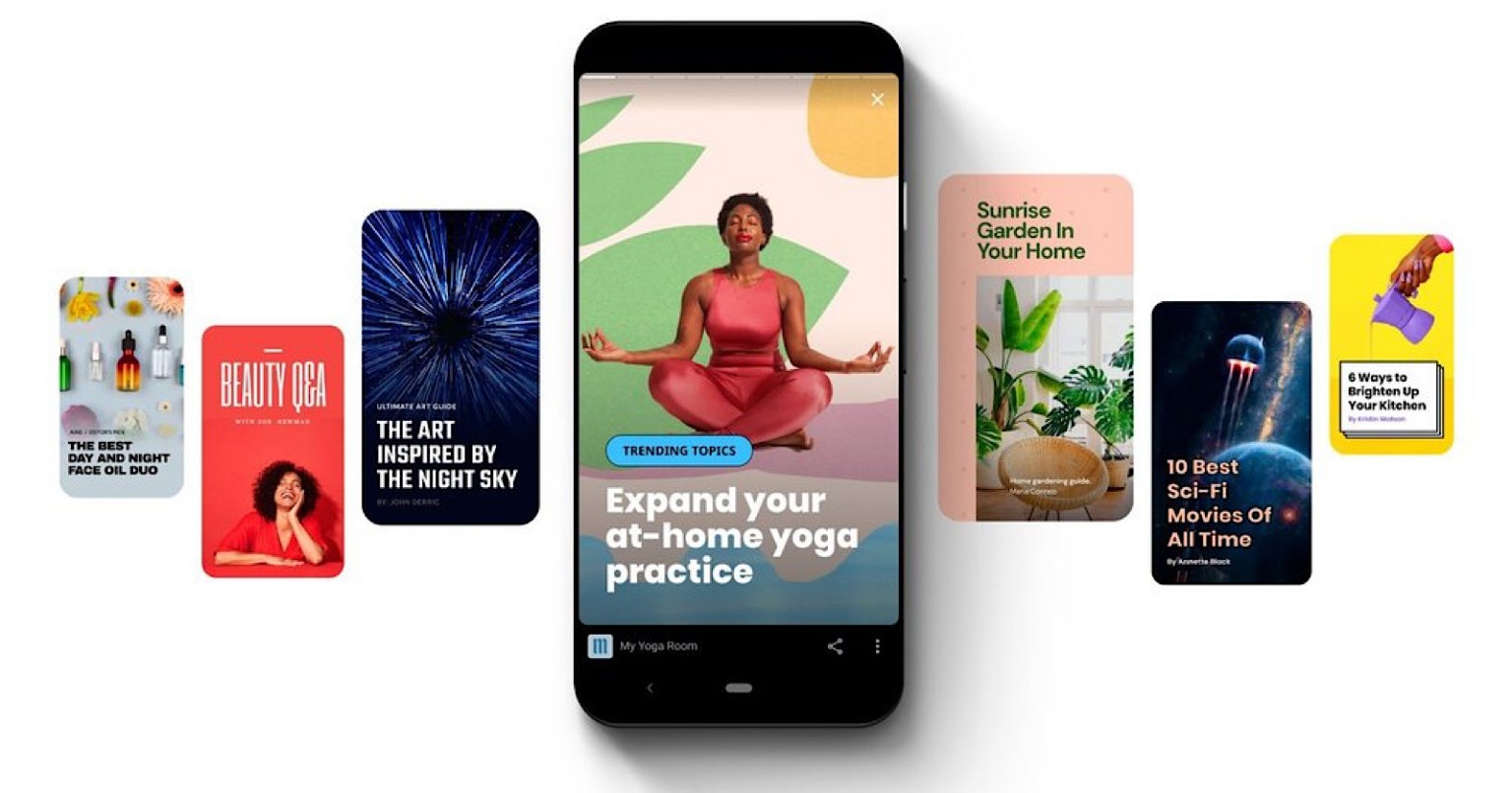Heard of Google Web Stories but not sure if it’s a format worth exploring for you small business’ content marketing efforts? I was in your shoes once. Let me tell you what I’ve learned.
What’s a Google Web Story?
You might already be familiar with Google’s take on the ”Stories” format, but if you’re not, here’s the skinny:
- They work and look like all the other takes on this media format, from Snapchat to Instagram to Facebook
- They are hosted by you, on your own site
- Google’s black box ”Discover” algorithms pick them up (or not!) and show them to people who use an Android phone or the Google app on iOS
Up to now, they’ve been really popular with media outlets. It’s really easy to reformat news stories and lifestyle guides and the like—just throw in some imagery, copy/paste some text, and you’re good to go.
Google Web Stories for businesses
But what about your small business? Is there anything to be gained on the content marketing front from repurposing your blog articles into Google Web Stories? Good question! If you’re asking it, you’re closer to being in the loop than most people.
See, the fact is most people in the content marketing space don’t even know that Web Stories exist, mostly because it’s not obvious just how huge of an audience they can reach. That ”people who use an Android phone or use the Google app on iOS” demographic I mentioned? Yeah, it’s hundreds of millions, if not billions of people.
The reason people sleep on Google Web Stories, though, is that making them is a bit like screaming into the void. 500,000 people might see your story, but also 500 people might. Before you just toss it out, you have very little means to gauge this.
Compare that with Instagram or Facebook, for example, where you know for a fact that at the very least every story you make is going to appear as an opportunity to tap on for all of your follower base. On Google Web Stories, you have no follower base. No one does.
So should you give them a shot?
To me, the answer here is a resounding: yes. I’ve seen Google Web Stories offer some pretty poor ROI. Put together a story with 10 pages, 10 unique images, links, good metadata, even some animations, and there’s no guarantee of anything at all. I’ve also seen stories, that Google’s Discover algorithms just loved, take on a life of their own and drive hundreds of thousands of impressions.
Google’s algorithms really are a black box, but there are some factors that can affect your story’s rankings:
- The overall authority/ranking of the domain itself
- The topic of the story, which may reach larger or smaller audiences depending on how large the filter bubbles are with people of that interest
- The quality of the content
- The length of the story and the amount of original media
- How people interact with it (bounce rates, etc.) after you publish it
Most content marketing teams are already putting out content and repurposing it across countless social platforms. Adding Google Web Stories as one more isn’t going to take much more work. If you’re already drafting tweet threads for your blog posts, for example, copying/pasting those over into a Web Stories editor isn’t going to take much time. The only case where Web Stories might be an impedance is if you’re not already doing original graphics. You need images for the slides.
What’s the easiest way to get started?
If you already use WordPress for your marketing site and blog, installing the first-party Google Web Stories plugin is the easiest way to get started. It’s not the best or highest-quality tool for building these, but it’s free, has easy settings for linking it up to your theme and analytics software, and it’s easy to figure out and get some stories published with little headache.
And that’s really where my advice lands on this topic: they’re a mixed bag of awful and amazing, but when they’re amazing, they’re really amazing.
Use some of the built-in templates, combined with some flair from your brand’s own colors and style, and just start putting out some Web Stories. Make sure your domain is linked up to Google Search Console and start tracking how they do. You might be surprised to see just how much traffic they drive.
